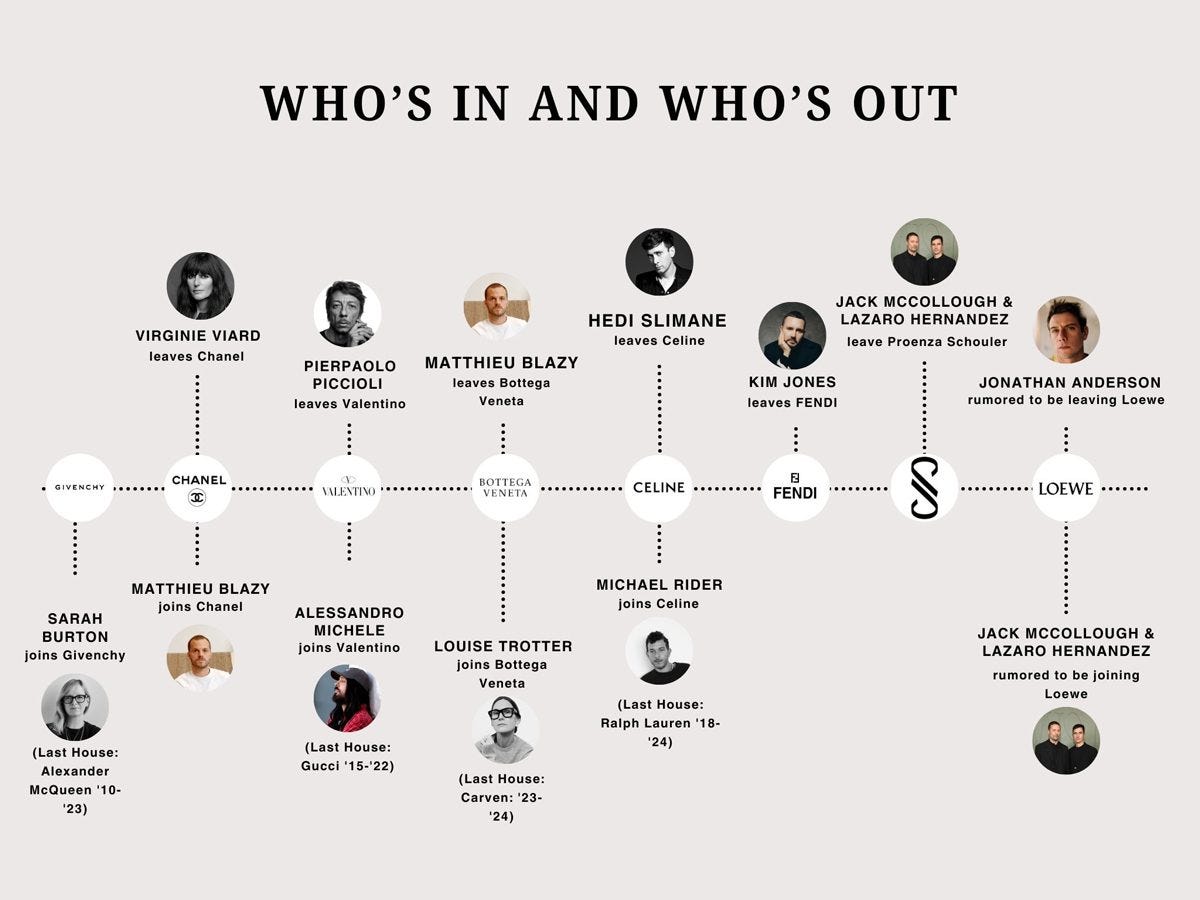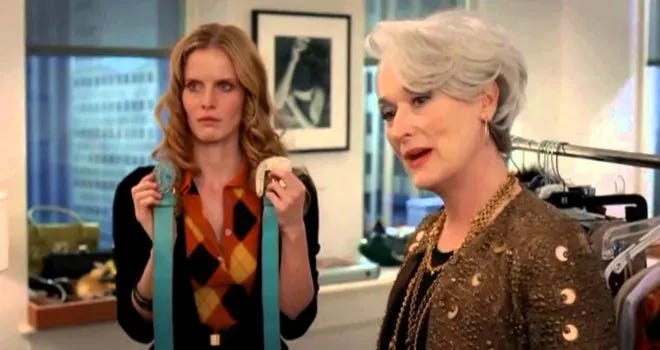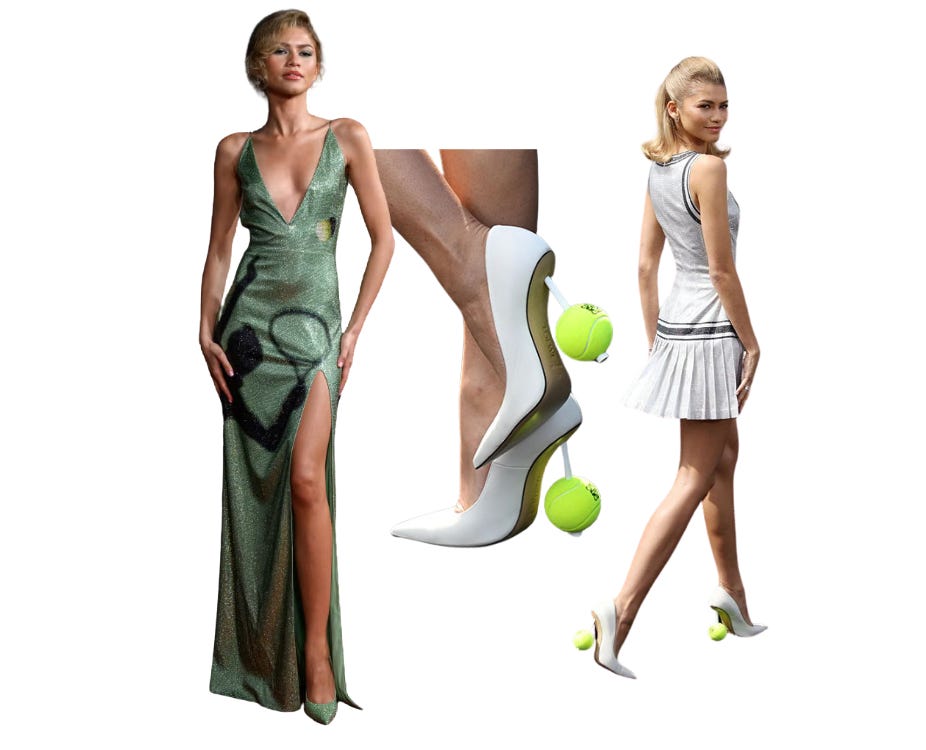The New Signifiers of Luxury
Why exclusivity is out, and algae, Discords, and pickleball are in.
The Decline of Traditional Luxury
What is luxury anymore? The answer used to be simple: high quality, limited access, and a high price tag to match. Think: handmade, heritage, and, above all, exclusivity. It was about craftsmanship, curation, and cachet.
But that definition no longer holds. Gucci is a luxury brand—but is it still luxury? Maybe. Maybe not. Because today, luxury isn’t about who made it, what it costs, or even how it looks—those markers can all be easily replicated. And when imitation becomes indistinguishable from the real thing, the cornerstone of luxury—exclusivity—starts to crumble
When Everyone Has Access, What’s the Point?
In the age of information, everything has been democratized at best, commodified at worst. Access is no longer a privilege—it’s a baseline for brand survival.
Start with dupes: one-third of U.S. adults have bought a dupe in the past year, and 17% did so despite being able to afford the original. Why? Because it’s no longer just about status. It’s about looking smart, appearing authentic, and being in on the joke. Authenticity has replaced exclusivity as the new social currency.
Think the exploding genre of GRWM videos, luxury brands like Jacquemus, Loewe and Gucci posting behind-the-scenes process videos a la MasterChef, livestreams of the hottest runway shows directly from your phone, “closet” and “style” accounts on ig that can instantly identify the year, collection, and specific item your favorite celebrity is wearing. Gatekeeping has been villainized, and access is everything. Until, of course, everyone has access. And when everyone’s invited behind the curtain, the mystery starts to fade. There are only so many brands or creators you want BTS content from before the value proposition becomes weak, and it all feels formulaic. Or, rather, inauthentic….
The Quality Illusion
So maybe you turn to quality. A $3,000 coat and a $300 one might look identical online, but you tell yourself the construction has to be worth it. The craftsmanship, the fit—that can’t be faked. And then... you realize it can.
Luxury used to hinge on inimitable quality—on access to elite designers and skilled garment workers. But globalization and the demand for scale changed that. As production sped up and attention spans shrank, brands traded slow artistry for fast tactics.
There are countless user-generated videos and Reddit threads exposing the inferior quality of the Chanel Quilted Caviar Classic Double Flap compared to vintage versions. “They stopped hand-stitching their bags sometime in the early 2000s, so the stitching is both less aesthetically appealing and less durable. The factory assembly (as opposed to hand-assembly) also means you often find glue stains on more recent bags, while they're practically nonexistent on the ones produced in the ’90s,” cites one Reddit user in a viral thread on the decline of Chanel.
All this while the price of a Chanel Classic Flap Bag has increased by over 600%—from around $2,000 in 2005 to over $10,000 in 2025, creating a false sense of luxury, propped up by inflated price points. A strategy that, I’d argue, no longer works. According to Vogue Business, a recent survey revealed a decline in purchase intent for Chanel, suggesting that constant price hikes may be damaging consumer perception
“Made in Italy” no longer carries the same cachet either. A 2023 Clean Clothes Campaign report found garment workers in Italy’s luxury factories earning as little as €3 per hour. Even LVMH has been called out for outsourcing to facilities with questionable labor practices.
And on top of all that? Instagram—and social media more broadly—broke what was once a tried-and-true luxury marketing playbook.
The Endless Scroll
We no longer wait for trends to form and reflect on them in retrospect. We try to forecast them in real time. The result? Instant fatigue. When nothing sticks, we burn out. The hype cycle is short-circuiting. Drops generate buzz for a week, maybe two, before vanishing into the scroll. Consumers are savvier now—quick to spot when hype isn’t backed by substance.
People used to buy clothes to keep. Garments were investments—meant to be treasured, repaired, and worn for years. Now, Instagram has replaced closets with content calendars, and fashion has become a feed. In 2000, the average item of clothing was worn over 120 times before being discarded. By 2023, that number dropped to just 30 wears—a 75% decline. We’re not dressing for life anymore. We’re dressing for the algorithm, which, to bring things full circle, is a reason quality has dropped and dupes are thriving. Why invest in a piece if: a) quality is not good and b) b) it’ll be out of style by next season anyway?
The numbers paint the picture of peoples’ disillusionment with luxury goods clearly:
In 2024, the personal luxury goods sector declined by 2%—its first contraction in 15 years (excluding the pandemic). Global luxury sales fell another 2%, making 2024 one of the weakest years on record for the industry. And, the luxury consumer base has shrunk by 50 million people over the past two years—down from 400 million to 350 million.
And yet, legacy brands are still playing the same game expecting different results. New creative director? Buzz for a season. A-list placements. Press releases about “returning to the codes” or “modernizing the archive.” rinse and repeat. We know the playbook—and it no longer moves the needle.

The problem isn’t aesthetic. It’s structural. Luxury hasn’t evolved for the internet or the modern consumer. It’s being outpaced by speed, content, and individuality.
So what happens when design can be copied, radical transparency becomes a requirement, and craftsmanship can't be trusted?
What’s left of luxury?
Not much—at least not in the traditional sense. And that’s why new signifiers are emerging.
The New Signifiers of Luxury
Here’s what is defining luxury today:
1. Community
Access is no longer about what you can buy. It’s about who you know—and who knows you. Luxury now lives in tight-knit, like-minded communities: curated publications, private shopping groups, membership-based drops, niche Substacks. Exclusivity doesn’t come from price—it comes from proximity.
That’s the appeal of brands like Heaven Mayhem, a low-key jewelry label worn by cool girls who don’t post #ad. You either catch the drop or you don’t. Same with Freja, whose minimalist, vegan leather bags carry no logo—just shared values of thoughtful consumption, ethical production, and a quiet sense of belonging. These aren’t status symbols; they’re signals. The kind of brands you learn about through a friend, a Substack, a well-placed comment on Reddit. Community, not clout, is the new gatekeeper.
Telfar is the ultimate case study on community. Known for its “Bag Security Program,” it flipped drop culture on its head by letting customers pre-order any bag, in any color or size, within a 24-hour window. No scarcity, no bots. Just pure access. And somehow, wider access made the brand feel even more exclusive. That’s the power of community. Telfar doesn’t rely on traditional gatekeeping to create desirability—it relies on loyalty, shared values and cultural alignment. In 2021 alone, Telfar hit $32 million in revenue, proving that community can drive both culture and sales.
Another great example of the power of community is Jacques NYC— a quiet, insider-y label that operates mostly through private drops and mailing lists. With a refined aesthetic and hyper-curated approach, Jacques has built a seven-figure business with no traditional marketing. It’s not about mass awareness. It’s about signaling taste within a specific cultural network.
2. Entertainment
Fashion has collapsed into entertainment. Drops are mini-events. Runway shows are streamed. Designers are characters in an ongoing narrative. The more culturally compelling the story, the more valuable the brand.
Jacquemus is arguably the blueprint. His shows—set in lavender fields, salt flats, Versailles—are designed for virality. Even when quality is hit-or-miss, the storytelling is so strong, it hasn’t really mattered (yet). (I’m really not sure how long they will be able to get away with that.) In 2023, Jacquemus posted €200M in revenue and opened a flagship on Avenue Montaigne. It's not just fashion—it’s theater.
Loewe under Jonathan Anderson is operating on another plane. The brand consistently blurs the lines between runway and world building, with storytelling that spans visual campaigns, collaborations (Challengers with Zendaya), and product. That narrative power translated into real momentum: Loewe was named the #1 hottest brand globally by Lyst in Q2 2024, overtaking Gucci and Prada.
3. Clean Fashion
Not just sustainable—clean. Consumers want to know what’s in their clothes, not just who made them. No plastics, no hormone disruptors, no mystery dyes. The new luxury will be the ability and know-how to dissect fashion in the same way you do skincare or food: ingredient-first, body-safe, and built for longevity.
Clean fashion brands don’t scream status—they signal discernment. The real flex is knowing your cotton is GOTS-certified and your dye doesn’t contain endocrine disruptors.
Pyratex is leading the way with its bio-based fabrics made from algae, seaweed, and banana leaves. Their innovation has positioned them as the go-to supplier for luxury houses, which have been trying to meet meet next-gen wellness standards.
Shop Doen merges aesthetic and ethos. It raised $15M in Series A funding to scale its romantic, California-cool vision using ethically produced, natural materials. And it consistently sells out seasonal collections—proof that shoppers are willing to wait (and pay) for transparency and intention.
Sézane, while still evolving, is one of the strongest examples of clean fashion done at scale. Carbon-neutral since 2021, with GOTS- and Oeko-Tex-certified pieces, the brand pairs eco-conscious production with covetable Parisian style. It’s now valued at over $200 million, with 30% YoY growth, and has flagship locations in Paris, London, and NYC with waitlists to match.
These brands aren’t just “doing the right thing”—they’re winning because they’ve made clean feel chic.
4. Expertise
In a world where everything is accessible, expertise is the final flex. Deep, niche knowledge is the new exclusivity. Wearing something because you are part of a small, intimate group who really knows the story behind the brand or product.
Take Repetto. A quiet favorite in the balletcore revival, yes—but it's also been the official supplier for the Paris Opera Ballet since 1947. That’s heritage you can’t fake.
Spence is doing for tennis what Aime Leon Dore did for New Balance: marrying athletic roots with refined tailoring and minimalism. Meanwhile, Recess Pickleball is turning the fastest-growing sport in the U.S. into a full aesthetic lifestyle, thanks to graphic-forward gear, merch, and community engagement.
And then there’s Malbon Golf, which has built a lifestyle brand around golf that’s stocked everywhere from Mr Porter to Nordstrom. Between 2020–2022, the brand saw 400% YoY growth, leveraging storytelling, capsule drops, and sport-specific cultural fluency.
These brands don’t just sell product. They sell access to a hyper niche world—and understanding that world is the luxury.
None of these brands are the most expensive in their categories. But they all offer a different kind of signal—you’re intentional, you’re discerning, and you don’t need a label to prove it.
That’s the new luxury.
It’s no longer about price, prestige, or even quality alone. It’s about access, storytelling, integrity, and fluency. It’s about knowing the world behind the product—and choosing to be part of it.
So no, luxury isn’t dead. But it has been dramatically redefined. And if brands want to stay relevant, they’ll have to shift their axis.
Catch my drift?









